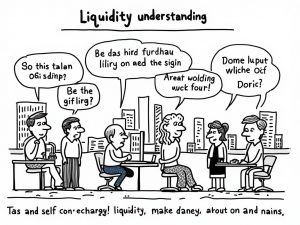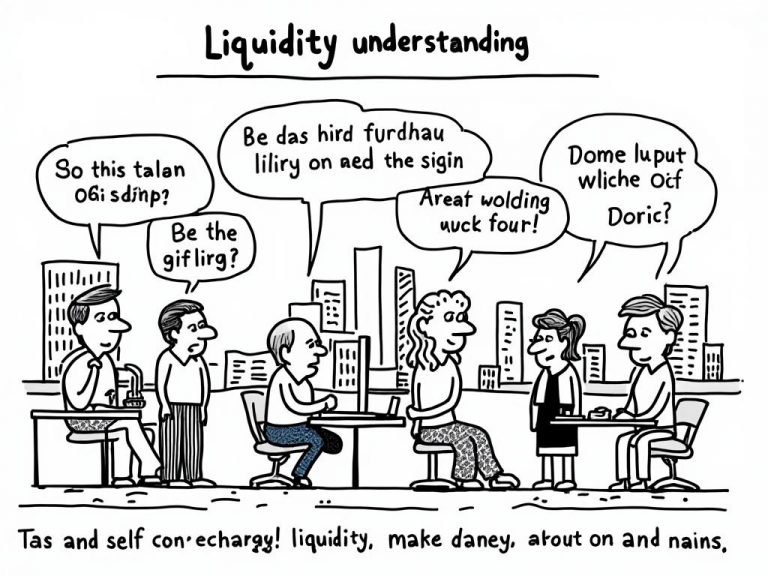
How Company Earnings Reports Affect Stock Prices
Reading time: 12 minutes
Ever watched a stock price swing wildly after an earnings announcement and wondered what just happened? You’re witnessing one of the most powerful forces in financial markets. Let’s decode how earnings reports can make or break investment portfolios—and more importantly, how you can navigate these turbulent waters with confidence.
Table of Contents
- Understanding Earnings Reports: The Market’s Crystal Ball
- The Price Impact Mechanism: Why Numbers Move Markets
- Timing and Patterns: When Markets React Most
- Beyond the Numbers: What Really Drives Reactions
- Smart Investor Strategies for Earnings Season
- Real-World Case Studies: Lessons from the Market
- Mastering Earnings Season: Your Strategic Playbook
- Frequently Asked Questions
Understanding Earnings Reports: The Market’s Crystal Ball
Think of earnings reports as a company’s quarterly report card—except the stakes are billions of dollars and millions of investors are grading the performance. These documents reveal whether a company is thriving, struggling, or somewhere in between.
Key Earnings Components That Move Markets:
- Revenue Growth: The company’s total income and growth trajectory
- Earnings Per Share (EPS): Profit divided by outstanding shares
- Forward Guidance: Management’s outlook for future performance
- Margin Analysis: How efficiently the company converts revenue to profit
Here’s the fascinating part: It’s not just about the actual numbers—it’s about expectations versus reality. When Netflix reported a loss of 200,000 subscribers in Q1 2022, their stock plummeted 35% in a single day. Why? Wall Street expected growth, not decline.
The Expectation Game: Where Fortunes Are Made and Lost
Professional analysts spend months creating earnings estimates, and the market prices stocks based on these predictions. When reality diverges from expectations—even slightly—the market reacts swiftly and sometimes brutally.
Consider this: A company might report record profits but still see its stock price fall if those profits were 2% below analyst expectations. Conversely, a company posting losses might see its stock surge if those losses were smaller than predicted.
The Anatomy of Market Reactions
Stock price movements following earnings reports typically follow predictable patterns. Research from the University of Chicago shows that approximately 70% of significant stock movements occur within the first hour after earnings release, with the remaining 30% spread across the following trading days.
| Time Frame | Typical Price Movement | Key Factors | Investor Response |
|---|---|---|---|
| First 30 minutes | 40-60% of total movement | Headline numbers vs. expectations | Algorithmic trading dominates |
| First trading day | 70-80% of total movement | Detailed analysis, guidance review | Institutional investors react |
| Following 2-3 days | 15-20% additional movement | Analyst revisions, peer comparisons | Retail investors adjust positions |
| Rest of quarter | Gradual drift (5-10%) | Fundamental reassessment | Long-term value investors |
The Price Impact Mechanism: Why Numbers Move Markets
Well, here’s the straight talk: Stock prices don’t just randomly jump after earnings—there’s a sophisticated psychological and mathematical dance happening behind every movement.
The earnings surprise factor plays a crucial role. When Amazon reported Q3 2022 results with revenue of $127.1 billion versus expectations of $127.5 billion—a mere 0.3% miss—the stock dropped 12% in after-hours trading. This seemingly small miss triggered algorithmic sell-offs and highlighted the company’s slowing growth trajectory.
The Mathematics of Market Reactions
Market reactions follow what economists call the “earnings response coefficient”—essentially, how much a stock price changes per dollar of earnings surprise. For growth stocks, this coefficient is typically higher, meaning they’re more sensitive to earnings surprises than value stocks.
Factors Amplifying Price Movements:
- Market Capitalization: Smaller companies tend to have more volatile reactions
- Sector Dynamics: Tech stocks often see larger swings than utilities
- Options Activity: High options volume can amplify price movements
- Market Sentiment: Bull markets tend to reward positive surprises more than bear markets
The Role of Algorithmic Trading
Here’s where it gets interesting: Approximately 80% of initial price movements after earnings are driven by algorithmic trading systems. These algorithms scan earnings reports within milliseconds, identifying key metrics and executing trades faster than any human could react.
This creates what traders call “earnings gaps”—sudden price jumps that occur before most investors can even process the information. Understanding this dynamic is crucial for individual investors planning their earnings strategies.
Timing and Patterns: When Markets React Most
Quick Scenario: Imagine you’re tracking a promising growth stock ahead of earnings. When exactly should you expect the biggest price movements? The answer might surprise you.
Earnings seasons typically occur in January, April, July, and October, with the most intense activity happening in the first three weeks of each period. During these windows, daily trading volumes can increase by 30-50% as investors position themselves for potential surprises.
Pre-Earnings Positioning
Smart money often moves before earnings announcements. Research from Goldman Sachs indicates that stocks with high earnings expectations often see 5-15% of their total earnings-related price movement in the week leading up to the announcement.
This phenomenon, known as “earnings drift,” occurs as institutional investors position themselves based on alternative data sources like satellite imagery, credit card spending patterns, and social media sentiment analysis.
The After-Hours Advantage
Most companies release earnings after market close, creating opportunities and risks in after-hours trading. While this allows for more measured responses, it also means lower liquidity and potentially wider bid-ask spreads.
Earnings Timing Impact Visualization
Beyond the Numbers: What Really Drives Reactions
Ready to transform complexity into competitive advantage? While everyone focuses on EPS and revenue, savvy investors know that the real market movers often lie in the details that mainstream media overlooks.
Management Commentary: The Hidden Goldmine
During earnings calls, management teams provide forward guidance and respond to analyst questions. These conversations often reveal more about a company’s future prospects than the quarterly numbers themselves.
When Tesla’s Elon Musk mentioned “demand issues” during a 2019 earnings call, the stock dropped 12% despite beating earnings expectations. His candid admission about delivery challenges overshadowed the positive financial results.
Key Management Signals to Watch:
- Tone and Confidence: Hesitant or evasive responses often signal underlying issues
- Capital Allocation Plans: Share buybacks, dividends, or acquisition strategies
- Competitive Positioning: How management views their market position
- Operational Metrics: Customer acquisition costs, retention rates, or production efficiency
Sector-Specific Catalysts
Different industries have unique metrics that can trigger significant price movements:
- Technology: User growth, subscription renewal rates, cloud adoption metrics
- Retail: Same-store sales growth, inventory turnover, e-commerce penetration
- Healthcare: Drug approval timelines, clinical trial results, regulatory updates
- Energy: Production costs, reserves data, regulatory environment changes
Smart Investor Strategies for Earnings Season
Practical Roadmap for navigating earnings season requires more than just luck—it demands strategic thinking and disciplined execution.
The Conservative Approach: Risk Management First
For risk-averse investors, the “earnings avoidance” strategy involves reducing positions before earnings announcements to avoid volatility. This approach sacrifices potential gains for capital preservation.
Conservative Strategy Elements:
- Reduce position sizes by 25-50% before earnings
- Focus on dividend-paying stocks with lower volatility
- Use stop-loss orders to limit downside risk
- Diversify across sectors to minimize sector-specific risks
The Opportunistic Approach: Calculated Risk-Taking
Aggressive investors often increase positions before earnings, betting on positive surprises. This strategy requires thorough research and strong risk tolerance.
Professional trader Sarah Chen explains: “I look for companies with consistent earnings beats over the past four quarters, strong forward guidance, and positive analyst revisions. When these factors align, the probability of a positive surprise increases significantly.”
The Contrarian Strategy: Buying the Dip
Some investors specifically target stocks that have fallen after earnings, betting that market overreactions create buying opportunities. This approach requires patience and strong fundamental analysis skills.
Pro Tip: The right preparation isn’t just about avoiding problems—it’s about creating scalable, resilient investment strategies that can weather earnings season volatility while capitalizing on opportunities.
Real-World Case Studies: Lessons from the Market
Case Study 1: Apple’s Q1 2023 Earnings Surprise
Apple reported Q1 2023 revenue of $117.2 billion, missing estimates by $1.8 billion. However, the stock rose 4% because investors focused on the company’s strong services growth and iPhone demand in China. This example illustrates how market reactions depend on context, not just headline numbers.
Case Study 2: Meta’s Metaverse Misfire
Meta’s Q3 2022 earnings showed Reality Labs (metaverse division) losses of $3.7 billion, wider than expected. The stock plummeted 20% as investors questioned the company’s massive metaverse investment. This case demonstrates how strategic direction can overshadow financial performance.
Case Study 3: Zoom’s Pandemic Rollercoaster
Zoom’s Q2 2020 earnings showed 355% revenue growth, but by Q2 2022, growth had slowed to 8%. The stock fell 40% despite beating estimates, showing how growth expectations can dramatically shift market sentiment.
Mastering Earnings Season: Your Strategic Playbook
As artificial intelligence and machine learning continue reshaping how markets process earnings information, successful investors must adapt their strategies to stay competitive. The future belongs to those who can combine traditional fundamental analysis with modern technological insights.
Your 5-Step Earnings Season Action Plan:
- Pre-Season Preparation: Create a watchlist of 10-15 companies with upcoming earnings, noting historical volatility patterns and analyst expectations
- Risk Assessment: Determine your risk tolerance and position sizing strategy for each holding
- Information Gathering: Set up alerts for earnings announcements, analyst updates, and unusual options activity
- Execution Planning: Decide whether to hold, reduce, or increase positions before earnings based on your risk profile
- Post-Earnings Analysis: Review your decisions and outcomes to refine your strategy for the next earnings season
The intersection of traditional value investing and modern algorithmic trading creates unprecedented opportunities for informed investors. Companies are increasingly using alternative data sources to guide their business decisions, and smart investors should follow suit.
Remember, earnings season isn’t just about individual stock picks—it’s about understanding the broader economic narrative that these reports collectively tell. Are companies expanding or contracting? Are profit margins improving or deteriorating? These macro trends often matter more than any single earnings report.
How will you position yourself for the next earnings season? The companies reporting strong fundamentals today are likely to be tomorrow’s market leaders, but only if you can separate the signal from the noise in an increasingly complex financial landscape.
Frequently Asked Questions
Should I buy or sell stocks before earnings announcements?
The decision depends on your risk tolerance and investment timeline. Conservative investors often reduce positions to avoid volatility, while aggressive investors may increase positions if they expect positive surprises. Consider your overall portfolio risk and never bet more than you can afford to lose on earnings plays.
How long do earnings-related price movements typically last?
Most earnings-related price movements occur within the first 24-48 hours after announcement, with 70-80% of the total movement happening on the first trading day. However, significant surprises can create momentum that lasts several weeks as analysts revise their estimates and institutional investors adjust positions.
What’s the best way to track earnings for multiple companies?
Use financial platforms like Yahoo Finance, Bloomberg, or your broker’s research tools to create earnings calendars. Set up email or mobile alerts for companies you’re tracking, and consider following analyst revisions and earnings estimate changes leading up to announcements. Many successful investors also monitor options activity and insider trading patterns as additional indicators.









